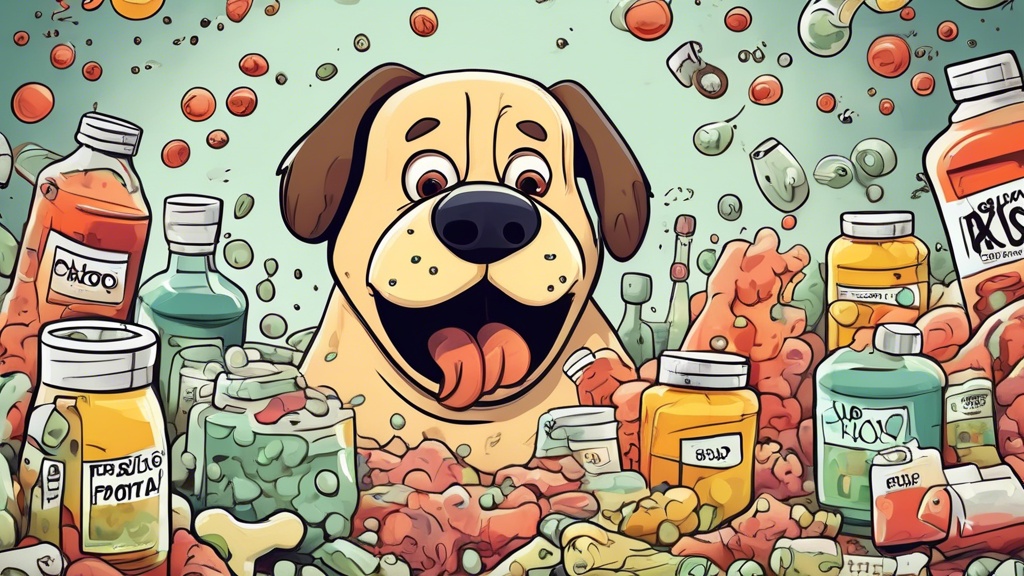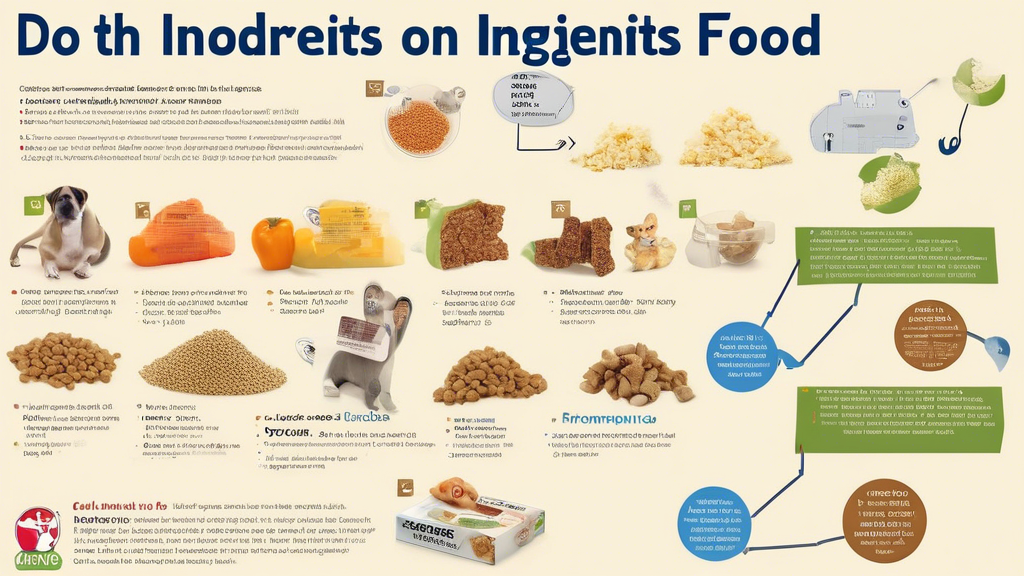**The Truth About Ingredients In Your Dog Food: Unmasking Label Claims and Hazardous Additives**
In today’s pet-centric world, discerning dog owners are seeking transparency and accountability in their furry companions’ diet. This article delves into the intricate web of ingredient lists on dog food packaging, deciphering the often-confusing claims and revealing the truth about potential health hazards lurking within.
We will embark on a journey of ingredient analysis, exposing the significance of various components and their impact on canine well-being. Together, we will decode the marketing jargon that often serves as a smokescreen for misleading claims.
Furthermore, we will uncover the harmful additives and preservatives that have no place in a dog’s bowl. From artificial flavors and colors to synthetic ingredients, we will unveil the risks associated with these unwanted contaminants. Additionally, we will emphasize the importance of avoiding fillers, low-quality ingredients that contribute to digestive issues and provide minimal nutritional value.
Armed with this newfound knowledge, you will be empowered to make informed decisions about your dog’s diet, ensuring their optimal health and well-being for years to come. Stay tuned as we unravel the truth about dog food ingredients, empowering you to become an advocate for your beloved companion’s nutritional needs.
Uncovering Label Claims:
Decoding the labyrinthine world of dog food labels is paramount to ensuring your furry companion’s well-being. Each ingredient listed on the label plays a pivotal role in shaping your dog’s diet. Understanding their significance will empower you to make informed choices about their nutritional needs.
Analyzing Ingredient Lists:
Ingredient lists are not mere alphabetical arrangements; they follow a specific order of decreasing weight. The first few ingredients constitute the bulk of the food’s composition, while the remaining ones occur in smaller quantities. This hierarchy provides valuable insights into the primary ingredients and their potential impact on your dog’s health.
Deciphering the functions of each ingredient is crucial. Protein sources, such as chicken, beef, or fish, serve as the building blocks for your dog’s muscles, organs, and fur. Carbohydrates, like rice, oats, or corn, provide energy and fiber to keep their digestive system functioning smoothly. Fats, such as chicken fat or fish oil, contribute to healthy skin, coat, and cognitive function.
Decoding Marketing Jargon:
Beware of buzzwords and misleading claims that manufacturers often employ to entice consumers. Terms like natural or human-grade may not carry any regulatory significance and can be used loosely. Scrutinize the ingredient list carefully to verify if the claims align with the actual composition of the food.
Unraveling the complexities of dog food labeling empowers you to make informed decisions for your beloved companion. By understanding the significance of ingredients and decoding marketing jargon, you can ensure that your dog’s diet is tailored to their specific nutritional requirements, promoting their optimal health and well-being.
The #1 Free Source for Pitbull & Bully Pedigrees!

## Harmful Ingredients to Avoid: Unmasking the Hazards in Dog Food
### Artificial Preservatives and Flavors: A Toxic Threat
Unnatural preservatives, such as BHA, BHT, and ethoxyquin, are commonly added to dog food to extend its shelf life. However, these chemicals have been linked to a range of health problems, including cancer and organ damage.
Similarly, artificial flavors and colors, such as Blue 2 and Yellow 6, are used to enhance the appeal of dog food. But these synthetic ingredients can trigger allergic reactions, digestive upset, and even behavioral issues.
### Low-Quality Fillers: Junk Food for Dogs
To bulk up dog food and reduce costs, manufacturers often use fillers such as corn, wheat, and soy. While these ingredients may provide some carbohydrates, they offer minimal nutritional value.
Excess fillers can lead to digestive issues such as gas, bloating, and diarrhea. They can also contribute to weight gain and obesity, as dogs consume more calories to feel satisfied.
### Synthetic Vitamins and Minerals: A False Promise
While it’s essential for dogs to receive adequate vitamins and minerals, synthetic forms are often used in dog food as cost-effective alternatives to natural sources. However, these synthetic versions may not be as easily absorbed or utilized by the body.
Instead, opt for dog food that contains natural vitamins and minerals from whole foods, such as fruits, vegetables, and organ meats. These provide a more bioavailable form of nutrients, ensuring your dog gets the most out of their food.
### Avoiding Harmful Ingredients: A Safeguard for Your Dog’s Health
By understanding the risks associated with certain ingredients in dog food, you can make informed decisions to protect your furry friend’s well-being.
Avoid products that contain artificial preservatives, flavors, colors, and low-quality fillers. Instead, choose dog food that focuses on natural, whole ingredients that provide essential nutrients and promote optimal health.
**Conclusion: Ensuring Your Dog’s Nutritional Well-being**
Understanding the ingredients in your dog’s food is crucial for ensuring their optimal health. Unraveling label claims and avoiding harmful additives are essential steps toward making informed choices. Consider the following key takeaways:
* **Scrutinize Ingredient Lists:** Carefully analyze ingredient lists to identify high-quality ingredients like whole meats, fruits, and vegetables. Understand their nutritional benefits and potential impact on your pet’s health.
* **Beware of Marketing Jargon:** Do not be misled by buzzwords or vague claims. Seek out clear and detailed information about the ingredients used in the product.
* **Avoid Harmful Substances:** Eliminate fillers and artificial ingredients that provide little nutritional value and pose potential risks to your dog’s well-being. Opt for natural, whole-food ingredients that support a balanced and healthy diet.
* **Consult a Veterinarian:** Consult with your veterinarian to determine the best diet for your dog based on their individual needs and health conditions. They can provide personalized recommendations and help you navigate the complexities of pet food ingredients.
Remember, your dog’s diet plays a vital role in their overall health and well-being. By educating yourself about ingredients and making mindful choices, you can ensure that your furry companion receives the optimal nutrition they deserve.













Leave A Comment